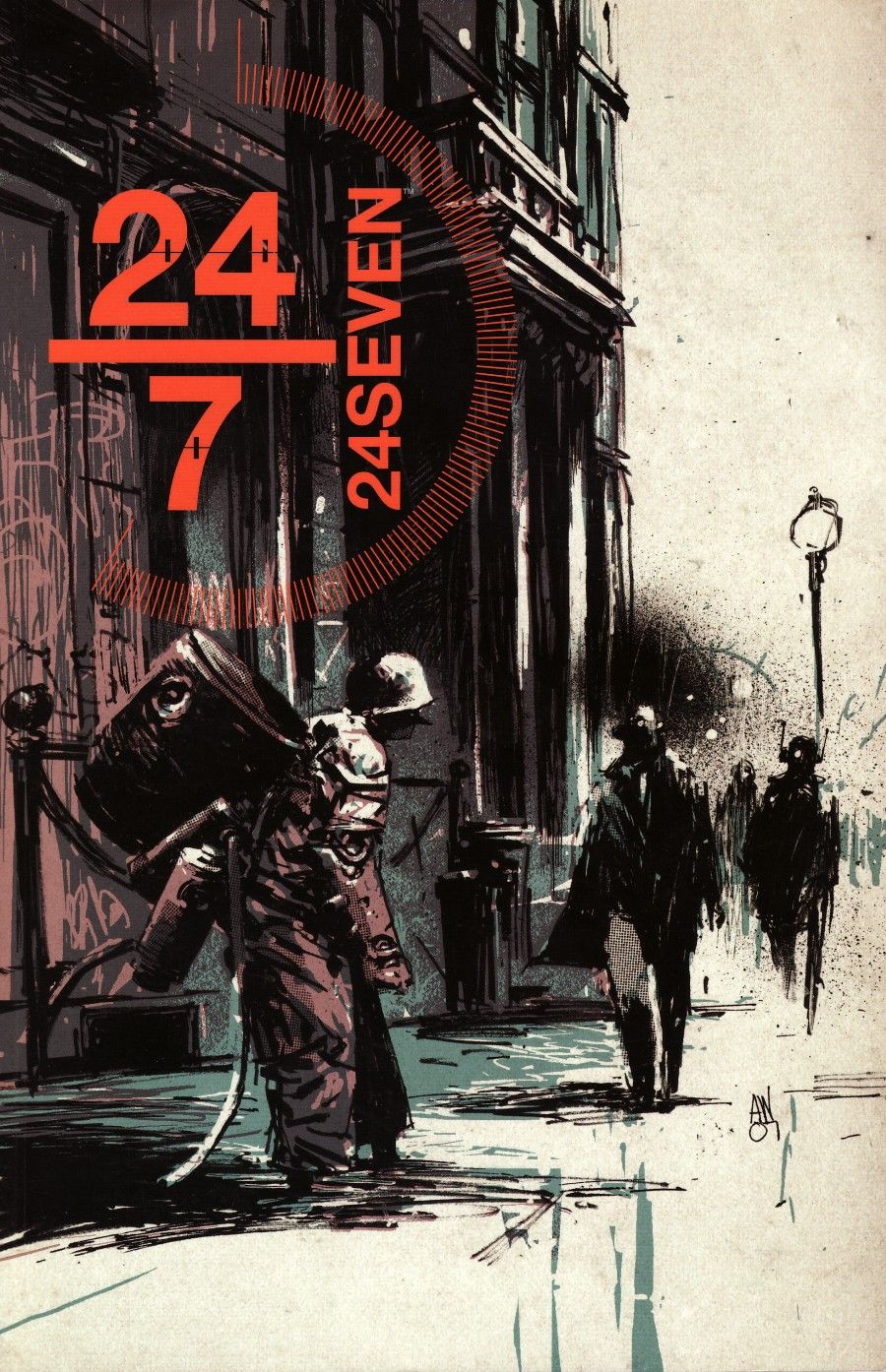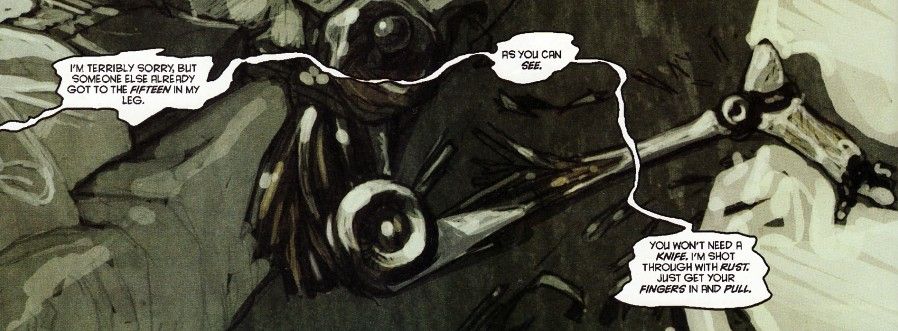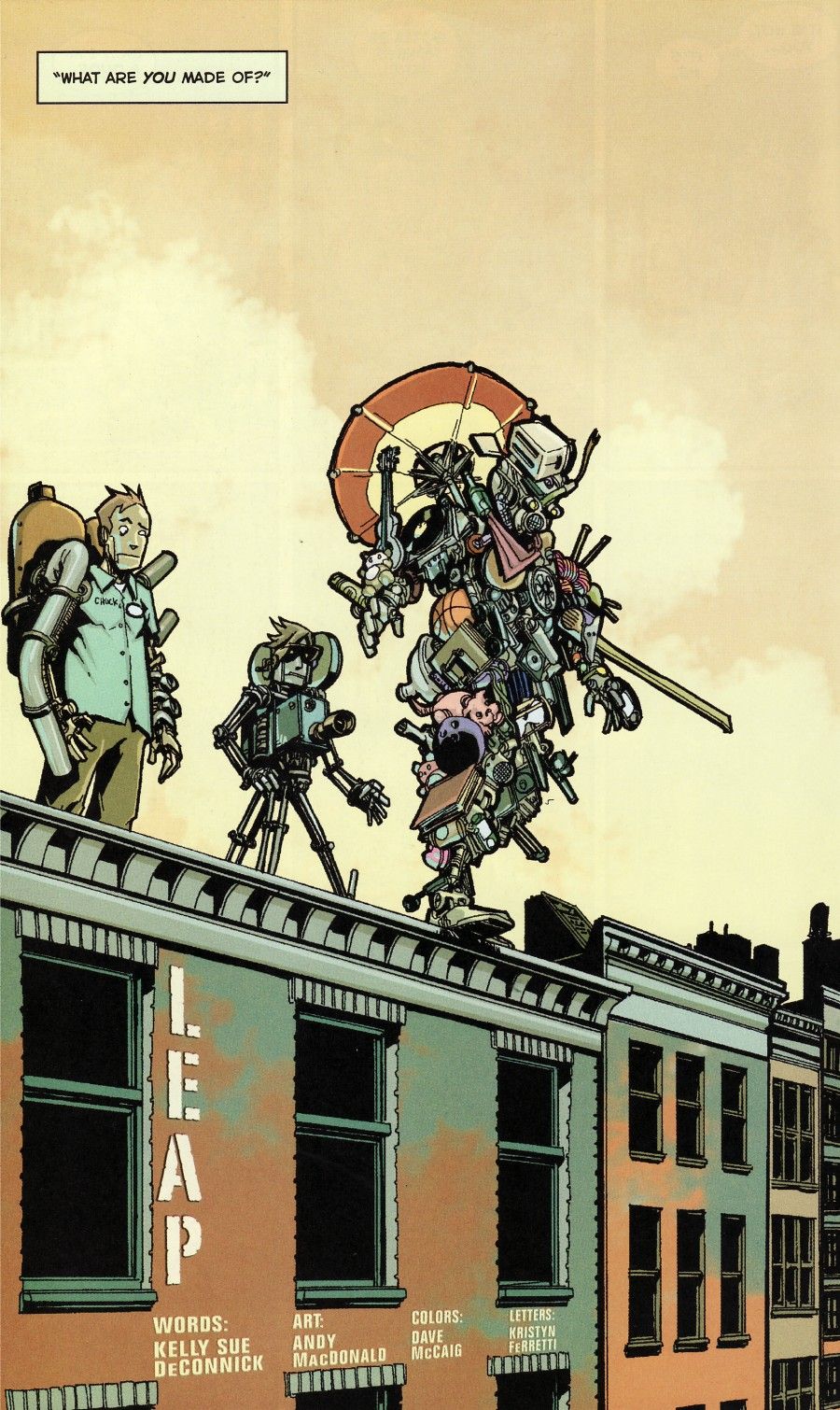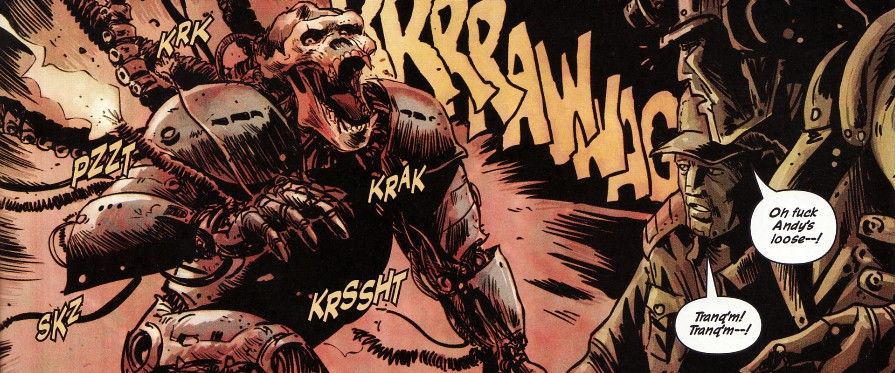Written and/or Illustrated by Ashley Wood, Gene Ha, John Ney Rieber, Paul Azaceta, João Ruas, Macon Blair, Ray Fawkes, José Luis Ágreda, Fábio Moon, Chris Arrant, Walter Pax, Nuno Plati, Jack Kaminski, Antonio Fuso, Miguel Alves, Frank Beaton, Dan Hipp, Josh Wagner, Seth M. Peck, Ivan Brandon, Adam Hughes, Phil Hester, Mike Huddleston, Miles Gunter, Michael Avon Oeming, Meg Hunt, Andy MacDonald, Francesco Francavilla, Gabriel Bá, Juan Doe, Mat Santolouco, Jonathan L. Davis, Diego Sanches, Carla Speed McNeil, Rafael Albuquerque, Ben Templesmith, Kelly Sue DeConnick, Calum Alexander Watt, Niko Henrichon, Dave Johnson, Jason Aaron, CB Cebulski, Alice Hunt, Chris Moreno, Larry Hime, Antony Johnston, Bruno D’Angelo, Mark Sable, Fiona Staples, Paul Maybury, Luis Sopelana, Tom Williams, Andy Kuhn, Mark Ricketts, Justin Randall, Will Pfeifer, Robbi Rodriguez, Jason Latour, and Frazer Irving
Edited by Ivan Brandon
Image Comics; $19.99
***
That’s much better.
My last review at the old place was of 24Seven, Volume 1, and while I had misgivings about it, I was interested enough by the end that I immediately ordered the next volume. One of the comments to that post was a request for a review of Volume 2, so this is especially for you, Auguste Miller.
Before I get too far into this though, I should clarify that "Robot Reviews" has more to do with the name of this blog than the subject-matter of this anthology. Kind of appropriate that our first official review is actually about robots, but it's not really on purpose.
Anyway...
I liked Volume 2 better for a couple of reasons. One is what I predicted after the first one: knowing what I was getting into made me better able to relax and enjoy the anthology for what it is. Instead of trying to figure out why there were robots in the art when most of the stories clearly were about human beings, I prepared myself for slice-of-life stories from the Big City.
The other reason I like it better is that more of the stories this time around actually are about robots. By which I mean that you couldn’t just swap the casts out for a bunch of humans and have the same stories. What I don’t mean by that is that these stories are about being a robot. Ironically, they use robots in a vital way to explore what it means to be human.
While trying to figure out what Volume 1 was all about, I explored reviews of it as well as reviews of editor Ivan Brandon’s similar comic, NYC Mech. And as I mentioned in the other review, there was a lot of head-scratching about the symbolism in those stories. The first hypothesis was usually that Brandon and Company were saying something about the dehumanization of Big City dwellers, but none of the reviewers were convinced that that’s really what was going on. On the contrary, the characters in NYC Mech and 24Seven are very human. Beautifully so, in many cases. And several creators in 24Seven 2 have latched onto that and taken it to some wonderful places.
I can explain it better with a couple of examples. The first story in the book is Ray Fawkes, Fiona Staples, and Frazer Irving’s “Flux.” Like 24Seven 1, I’m not going to comment much on the art in this book, because it’s all gorgeous. Both volumes are worth owning just to flip through and look at pictures, But Fawkes’ story in “Flux” illustrates what I mean about using robots as a necessary tool in relating a truth about humanity.
A young, punk, robot kid goes into a tenement building where he’s heard that an old robot is giving away money. In talking to the old robot though, the kid learns that there’s a catch. The money is hidden inside the old robot’s body and the kid has to take a piece of the old guy in order to get the cash. The analogy is as unmistakable as it is profound. The old man, dying alone in his cold, barren apartment, is desperate to leave something behind of himself. He’s frantic in his last hours to share himself with others. “Take a piece of me,” he asks. And it’s not just about legacy; the old man realizes that this sharing of ourselves and each other is humanity’s ultimate responsibility to itself. If he hasn’t done it, he’s failed as a person.
So you can see what I mean now. It’s a lovely, sad, important, and deeply human story, but try telling it with people. I suppose you could have an old, human man who has money surgically embedded into his body, but the bittersweetness of the metaphor would get lost in the horror of what the man had done to himself and was asking the kid to do. You need the robots to tell you about being human.
Kelly Sue DeConnick and Andy MacDonald’s “Leap” is another one. The focus here is on our human tendency to hide our real selves behind layers and layers of assumed identities, emotional baggage, and material possessions. We could all meditate for hours on what we’ve tried to hide beneath in our lives and it would likely be a profitable exercise, but “Leap” doesn’t invite us to do that. Instead, it pushes us towards the solution. Again, deeply human, but you’ve got to have the robots to tell it like they tell it.
All the stories aren’t like that of course, but even the ones that don’t have to be about robots have made the effort to highlight their characters’ robotic elements. Unlike Volume 1, there are very few stories here that talk about race or even favorite foods. You’re much more likely to hear robots talking about their memory cards or nano-counts. If Paul Maybury wants to tell a story about love taken for granted, he doesn’t just show you a jaded couple, he gives you a couple of robot ladybugs trying to score some candy. If Mark Ricketts and Andy Kuhn want to talk about paranoia and employee Internet usage, they won’t just mention spyware and corporate eavesdropping; they’ll bring out creepy, robot moths.
Another nice thing about Volume 2 is that there are a lot more adventure stories than Volume 1 offered. Like Niko Henrichon’s adaptation of a Reynard tale that gives the fox a robot body and has him competing against a robotic crow for a piece of cheese with the use of various other robotic warriors and weapons. Or Will Pfeifer, Andy MacDonald, and Paul Azaceta’s story of a picked-on street cleaner who receives an accidental upgrade just in time to wreak vengeance on his oppressors. Or Macon Blair and Francesco Fracavilla’s tragic tale of some robot mad-scientists and their cyborg-gorilla experiment that goes horribly, horribly wrong.
There’s so much variety in 24Seven 2 that I don’t even mind the few stories that would have been right at home in Volume 1. There are stories here that talk about domestic violence, post-traumatic stress, conspiracy-theory paranoia, and the need for a little messiness in our relationships. And they talk about them in ways that don’t need robots to do it. But they’re the exceptions, not the norm. They’re like lemon jelly beans. I like them just fine between bites of grape and strawberry, but I don’t want a whole bag of just lemon. Okay, that's a horrible analogy, but my point is that 24Seven 2 has lots of flavors and is a much stronger book for it.
Four out of five cyborg-gorillas.





